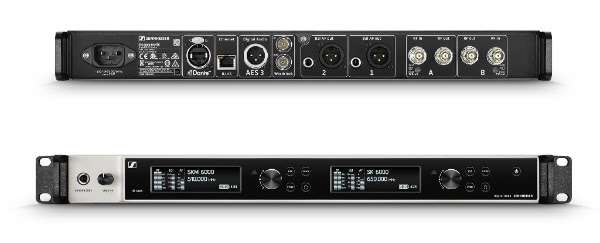Sennheiser’s Digital 6000 system now shipping
- Details

At the same time, the system fulfils the business need of rental companies, theatres, broadcasters and houses of worship for a flexible two-channel wireless solution that allows the use of existing accessory infrastructures. Designed for demanding live productions, Digital 6000 also addresses the challenges of the shrinking UHF spectrum: The system eliminates intermodulation, enabling more channels to operate in less spectrum space.
Tom Vollmers, product manager at Sennheiser, comments, “Digital 6000 is a wireless system that is all about performance. It brings the benefits of the Long Range mode of our benchmark Digital 9000 system to a two-channel receiver, while allowing the use of standard UHF antennas and existing Sennheiser capsules or microphones. Integration into analogue and digital workflows is seamless, and the fact that frequencies can simply be placed in an equidistant grid will help users in congested RF environments a lot.”
The Digital 6000 series comprises a two-channel receiver that is available in two different versions, a bodypack and a handheld transmitter, and a rack-mount 19” charging unit. The receiver’s switching bandwidth of 244 MHz (470 to 714 MHz) is covered by three transmitter versions (470 – 558 MHz, 550 – 638 MHz, and 630 – 718 MHz). Up to eight receiver units can be daisy-chained without the need for an additional antenna splitter; the multi-channel system will work with a single pair of antennas. System latency is 3 milliseconds.
Digital 6000 is compatible with Digital 9000 in long-range mode and with the EK 6042 digital/analogue camera receiver.
Look out for more on Sennheiser’s brand new Digital 6000 system in the forthcoming March 2017 issue of LSi magazine.
(Jim Evans)
















